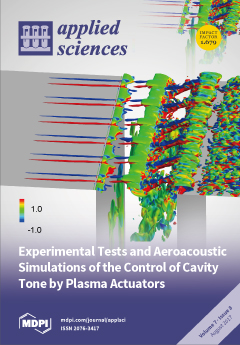Open AccessProject Report
Optimization of a Culture Medium Using the Taguchi Approach for the Production of Microorganisms Active in Odorous Compound Removal
by
Krzysztof Makowski 1,2, Katarzyna Matusiak 3, Sebastian Borowski 3,*, Jakub Bielnicki 1, Alicja Tarazewicz 1,†, Marta Maroszyńska 1, Martyna Leszczewicz 1, Szymon Powałowski 4 and Beata Gutarowska 3
1
Bionanopark, Laboratory of Industrial Biotechnology Ltd. Dubois 114/116, 93-465 Łódź, Poland
2
Institute of Materials Science and Engineering, Lodz University of Technology, Stefanowskiego 1/15, 90-924 Łódź, Poland
3
Institute of Fermentation Technology and Microbiology, Lodz University of Technology, Wólczańska 171/173, 90-924 Łódź, Poland
4
JHJ Sp. z o.o., 63-308 Gizałki, Poland
†
Author has passed away.
Cited by 21 | Viewed by 5469
Abstract
The aim of this work was to develop the composition of a medium for the cultivation of six microbial strains forming a deodorizing consortium:
Pseudomonas fluorescens,
Enterococcus faecium,
Bacillus subtilis,
Bacillus megaterium,
Leuconostoc mesenteroides and
Lactobacillus plantarum. The
[...] Read more.
The aim of this work was to develop the composition of a medium for the cultivation of six microbial strains forming a deodorizing consortium:
Pseudomonas fluorescens,
Enterococcus faecium,
Bacillus subtilis,
Bacillus megaterium,
Leuconostoc mesenteroides and
Lactobacillus plantarum. The study focused on the optimization of a highly efficient culture medium composed of readily available components of plant origin to maximize microbial biomass yields, and to create a less expensive alternative to the commercial Tryptic Soy Broth medium (TSB). After preliminary efficiency screening of all tested media components, we selected four substrates for further optimization—soy protein concentrate (SPC), glucose or sucrose, and phosphate salts. The final concentrations of all components were fine-tuned using the Taguchi design for experiments according to an L
9 array. Taguchi optimization led to formulation of a culture medium, which was approximately 5 times cheaper than TSB (depending on the components used). Consequently, microbial biomass yields were improved by up to 15-fold (1564%), depending on the strain. The results obtained in the laboratory experiments were then confirmed in pilot- (42 L) and industrial- (300 L) scale fermentation. Our results show that this method of using a parallel culture microbioreactor with the Taguchi approach can be recommended for optimization of culture media based on substrates of plant origin.
Full article
►▼
Show Figures





